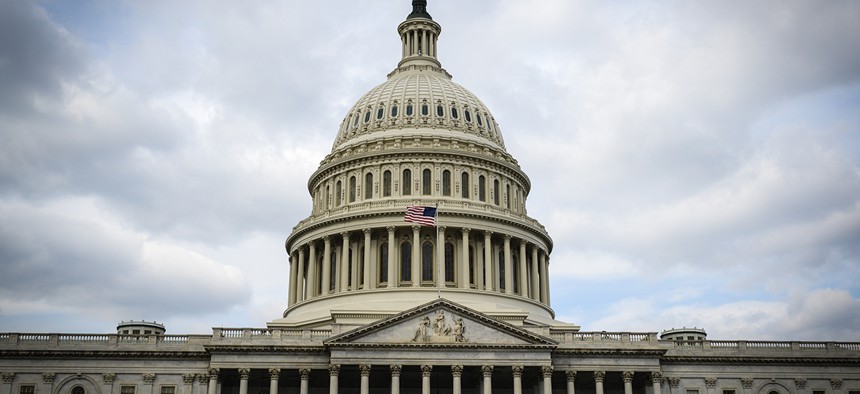Will Congress Write a $3 Billion Check for Better Federal IT Systems?

Brandon Bourdages/Shutterstock.com
It’s still unclear what strategy the White House is pursuing to make the newly proposed IT modernization fund a reality.
This article was updated Feb. 17 to include a statement from an Obama administration official.
Last week, the Obama administration announced a big push to upgrade outdated and obsolete federal IT systems.
The fiscal 2017 budget -- the last of the Obama administration -- called for the creation of a new $3.1 billion IT modernization fund, an innovative approach to help agencies make the often costly upfront investments necessary to upgrade old tech.
The multibillion-dollar fund -- officials say it could actually end up supporting between $12 billion to $15 billion in new application development -- aims to “kick-start an overhaul of federal computer systems,” President Barack Obama wrote in a Feb. 9 Wall Street Journal op-ed about the proposal, adding, “It’s no secret that too often government IT is like an Atari game in an Xbox world.”
It’s still unclear what strategy the White House is pursuing to make the modernization fund a reality. “The administration will be working with Congress on necessary legislation," an administration official told Nextgov on Monday. Just as important, it remains to be seen whether Congress will be willing to pitch in to the new Xbox fund.
At minimum, Congress simply needs to appropriate the necessary funding in one of next year’s spending bills. However, a separate piece of legislation enshrining the fund into law may be a sounder route, because it would help build buy-in from Capitol Hill, according to experts.
As it happens, bipartisan draft legislation circulating on Capitol Hill for the past few months would do just that. In addition to establishing a revolving fund for major system upgrades, the Cloud IT Act, introduced by Sens. Jerry Moran, R-Kan., and Tom Udall, D-N.M., would also overhaul the security-vetting process for agency cloud providers.
A final version of that bill is likely to be introduced in the next few weeks, according to Rich Beutel, the former House oversight committee staffer widely regarded as one of the legislative masterminds behind the 2014 Federal IT Acquisition Reform Act.
Such legislation could be the key to building support in Congress for the IT modernization fund, said Beutel, now the president of Cyrrus Analytics and who has also consulted on this latest piece of legislation.
"The process of rolling out the statute will serve as a catalyst to get the buy-in from the appropriators,” Beutel told Nextgov in an interview. “At least that's the hope.”
Of the nearly $51 billion the federal government estimates civilian agencies will spend on federal IT in the coming fiscal year -- the total IT budget is projected to be nearly $90 billion -- about 71 percent is dedicated to the operations and maintenance of existing systems, some of them quite dated.
The Internal Revenue Service could serve as Exhibit A in the legacy IT problem. Federal Chief Information Officer Tony Scott has even gone so far as to call it a “crisis.” At IRS, the architecture underpinning some systems dates back to the Kennedy administration, archaic programming languages run critical databases that store taxpayer data and hard drives -- much to the outrage of Republican lawmakers -- seem to keep crashing.
But lawmakers so far appear to be sending mixed signals about whether the proposed IT modernization fund is the right solution.
At a House oversight hearing last week, committee Chairman Jason Chaffetz, R-Utah, noted the federal government has spent more than $525 billion on IT since 2009, and much of it is “worthless.”
“The president puts out a thing saying, 'I need $3 billion more,’” Chaffetz said, referencing the modernization fund. ‘“We were only $3 billion short.' What happened to the other $525 billion? That's a legitimate bipartisan question.”
Rep. Will Hurd, R-Texas, who chairs the IT oversight subcommittee, told FCW in an email he supports the idea of an IT modernization fund, “but in order to ensure robust system hygiene, CIOs and agency heads need to be planning for continuous modernization within their existing budget process.”
Beutel, the former House staffer, said Congress may be justified in some of its skepticism.
There are already at least 39 different already existing revolving capital funds, he noted, and it’s unclear how widely they’re used. In addition, about a decade ago, the General Services Administration, which administered what was known at the time as the Federal Technology Service, landed in hot water after an investigation revealed it had mishandled some $900 million that had been routed through one of its revolving funds.
"So revolving capital funds got a black eye as a result of that,” Beutel said. “And the appropriators got really sketchy about them as well. So this black eye is going to need to be overcome and the way to overcome it is to have strict oversight and mature management by grownups.”
To Beutel, the proposed modernization fund meets that criteria.
For an agency to actually get its hands on the new funding, it has to demonstrate the system it's seeking to upgrade has a high cybersecurity risk and has a high cost to operate. Agencies will also have to show they're looking at using shared services, including cloud computing.
If approved, agencies would receive funding in installments tied to hitting major milestones. Agencies that receive funding will have to pay back into the fund once their new upgraded systems go live.
(Image via Brandon Bourdages/Shutterstock.com)


